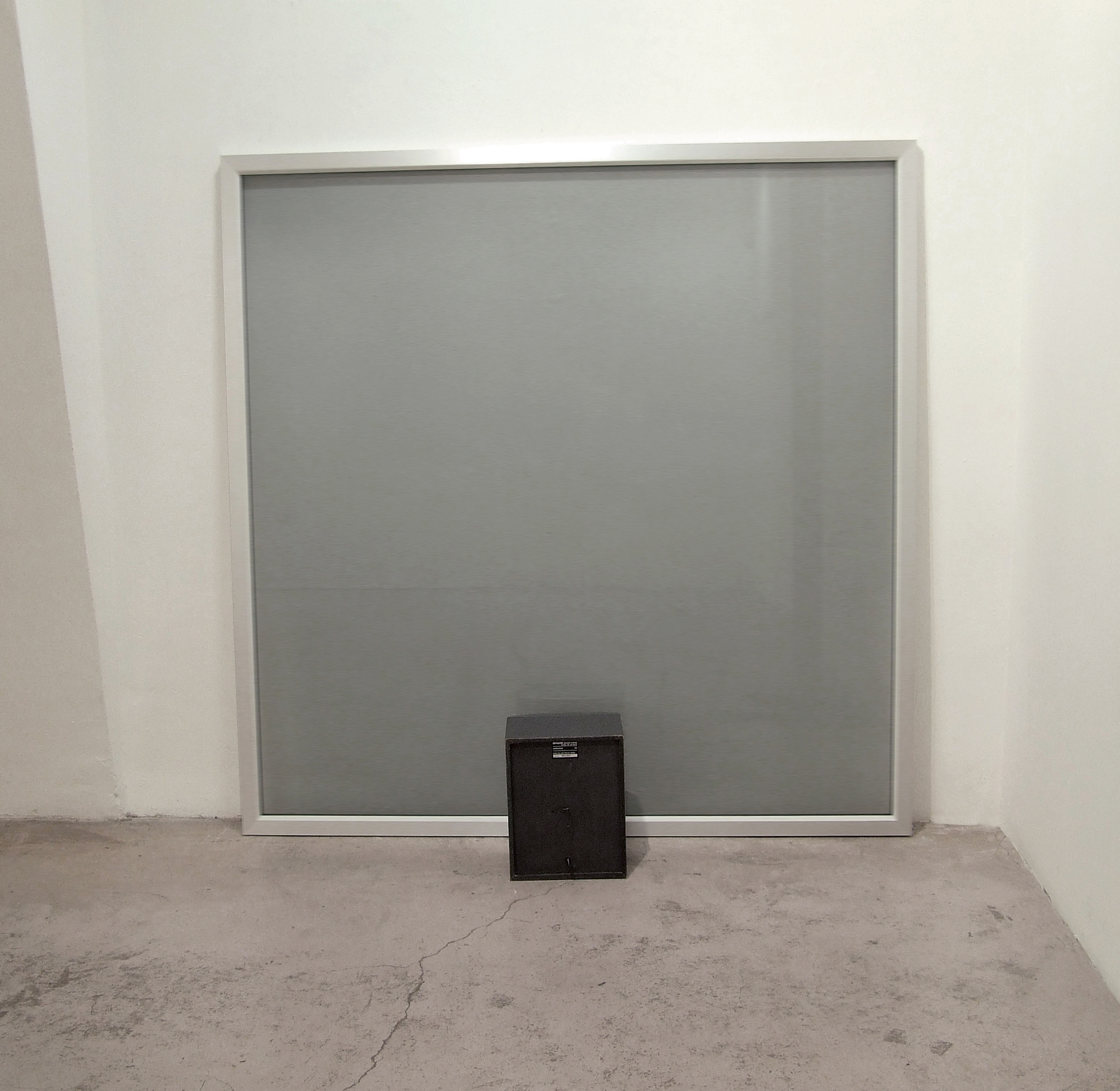
Loot (Ongoing sound installations)
-
Work in progress, Sound (3:53 min), loudspeaker, grey glass window, aluminium frame, plastic trash bag, inkjet print on A4 paper
Curator Lea Abir
Year 2009
Considering “Loot” as a form of inheritance, a form of memory that is stolen rather than given, was important for Goldstein in several works from this period. This specific series of works was produced over three years, with each stage evolving from the former. The artist’s interest in heirlooms, objects of specific, personal importance, and their intersection with collective memory and national heritage, is manifested here in everyday objects. The memory/history is conjured through the sound, and its relation to these everyday objects, as well as its relation to the previous stage in the process, accumulating layers of process-based incomprehensibility.
The process began by positioning a speaker that played an extremely slowed-down soundtrack very close to a window, so that the glass resonated in response. The soundtrack was manipulated so that the original words could not be understood, and weren’t even recognizable as words. In fact, they were a recording of Esther Goldstein, the artist’s grandmother, taken from her testimony at the Eichmann Trial. Her original words were: The S.S. man came, took the little girl and gave her to my mother… and the boy also … he took.” The vibration of the glass met the soundtrack, adding a layer of sound to it.
A soundtrack that consists of both these sounds was then recorded. This soundtrack was the basis for another installation, and played on a speaker placed in a large plastic garbage bag that rustled in relation the sound’s vibrations.
For the piece’s last iteration, a fluttering sheet of paper portraying a sentimental print of a pencil was attached to a speaker in the exhibition space. The final room sound of the three-layered piece consists accumulatively of Esther Goldstein’s slowed-down voice, the vibrating window, the rustling garbage bag, and the fluttering sheet of paper. The project’s previous phases are still seen onscreen.